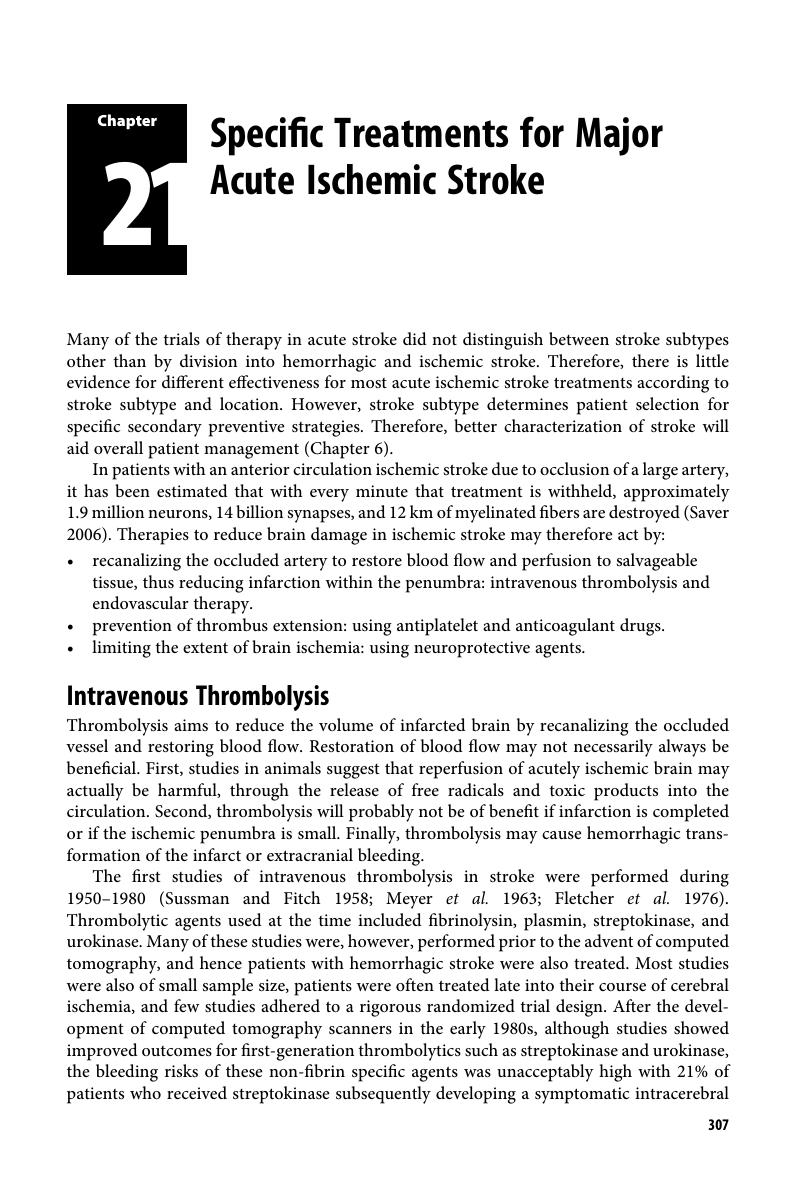Book contents
- Transient Ischemic Attack and Stroke
- Transient Ischemic Attack and Stroke
- Copyright page
- Contents
- Preface to the Second Edition
- Section 1 Epidemiology, Risk Factors, Pathophysiology, and Causes of Transient Ischemic Attacks and Stroke
- Section 2 Clinical Features, Diagnosis, and Investigation
- Section 3 Prognosis of Transient Ischemic Attack and Stroke
- Section 4 Treatment of Transient Ischemic Attack and Stroke
- Chapter 18 Methods of Assessing Treatments
- Chapter 19 Acute Treatment of Transient Ischemic Attack and Minor Stroke
- Chapter 20 Acute Treatment of Major Stroke: General Principles
- Chapter 21 Specific Treatments for Major Acute Ischemic Stroke
- Chapter 22 Specific Treatment of Acute Intracerebral Hemorrhage
- Chapter 23 Recovery and Rehabilitation after Stroke
- Section 5 Secondary Prevention
- Section 6 Miscellaneous Disorders
- Index
- References
Chapter 21 - Specific Treatments for Major Acute Ischemic Stroke
from Section 4 - Treatment of Transient Ischemic Attack and Stroke
Published online by Cambridge University Press: 01 August 2018
- Transient Ischemic Attack and Stroke
- Transient Ischemic Attack and Stroke
- Copyright page
- Contents
- Preface to the Second Edition
- Section 1 Epidemiology, Risk Factors, Pathophysiology, and Causes of Transient Ischemic Attacks and Stroke
- Section 2 Clinical Features, Diagnosis, and Investigation
- Section 3 Prognosis of Transient Ischemic Attack and Stroke
- Section 4 Treatment of Transient Ischemic Attack and Stroke
- Chapter 18 Methods of Assessing Treatments
- Chapter 19 Acute Treatment of Transient Ischemic Attack and Minor Stroke
- Chapter 20 Acute Treatment of Major Stroke: General Principles
- Chapter 21 Specific Treatments for Major Acute Ischemic Stroke
- Chapter 22 Specific Treatment of Acute Intracerebral Hemorrhage
- Chapter 23 Recovery and Rehabilitation after Stroke
- Section 5 Secondary Prevention
- Section 6 Miscellaneous Disorders
- Index
- References
Summary

- Type
- Chapter
- Information
- Transient Ischemic Attack and StrokeDiagnosis, Investigation and Treatment, pp. 307 - 327Publisher: Cambridge University PressPrint publication year: 2018



